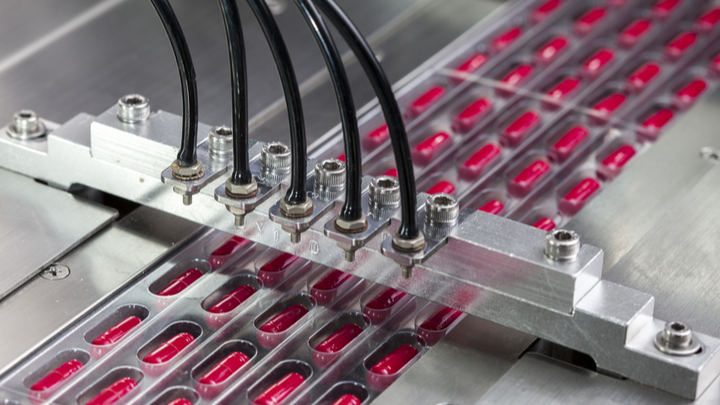Monitoring tablet production with near-infrared chemical imaging

A STUDY has shown that near-infrared chemical imaging (NIR CI) can be used for monitoring the mixture of powders during the manufacture of tablets, which will improve the quality of medications.
During the production of tablets, a powder blend is prepared with all of the necessary ingredients and then compressed with a tablet press. The active pharmaceutical ingredient (API) is added to certain non-medicinal ingredients, called excipients, which are used to facilitate the manufacturing process. Excipients have different roles, such as glidants which help the powder flow, binders which aid in the granulation process, and lubricants to stop the powder sticking to the components of the tablet press.
However, the mixture undergoes continuous motion which leads to inconsistencies of the powder such as density variations and segmentation of the material. This can lead to different doses of the API in individual tablets, providing potential health risks. Therefore, ensuring uniformity of the mixture in tablets is essential.
Currently, the manufacturing process is monitored with NIR spectroscopy, but this only scans a small area of the sample and uses a single array of pixels so that there is no spatial information available. This limited monitoring makes it difficult to detect problems such as segregation.
A new study has shown that NIR CI can be used to monitor the tablet production process and improve product safety compared to NIR spectroscopy. NIR CI can monitor a larger sample size and can give spatial information in the form of an NIR image. This also means that different image sections can be analysed to spot any localised concentration changes.
“With NIR CI, real-time visual representation of the process parameters is possible, which can be used by machine operators to intervene in the event of adverse phenomena such as segregation, a high or low concentration of the API, or an improper flow of material,” said Ryan Gosselin from Université de Sherbrooke, Canada. In some cases, it is possible to intervene to correct the problem, but if not, the poor-quality tablets can be removed.
Implementing NIR CI in pharmaceutical manufacturing is an important step for testing quality during the process and not just in the finished product. Understanding the process better helps to implement better process controls resulting in 100% assurance of product quality.
Journal of Spectral Imaging http://doi.org/cmns
Recent Editions
Catch up on the latest news, views and jobs from The Chemical Engineer. Below are the four latest issues. View a wider selection of the archive from within the Magazine section of this site.




